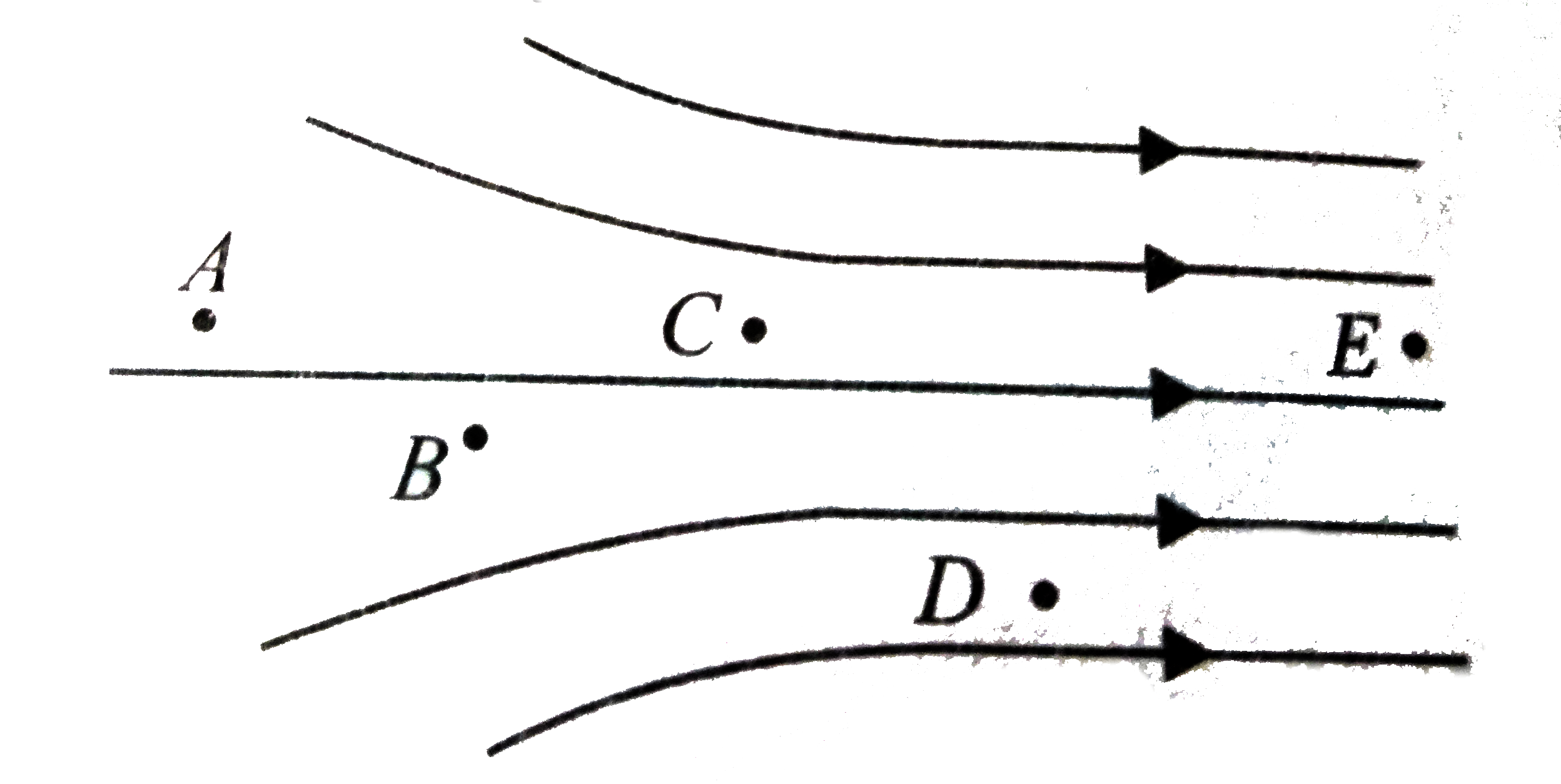In which of the following cases the electric field at the centre is not zero ?
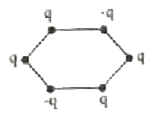
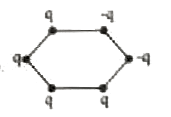
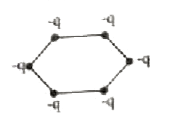
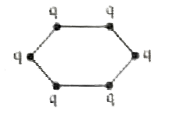
The correct Answer is:B
To determine in which case the electric field at the center is not zero, we will analyze the four given cases of charge arrangements step by step.
1. Understanding Electric Field Contribution:
- The electric field E at a point due to a charge Q is given by the formula:
E=k⋅|Q|r2
where k is Coulomb's constant and r is the distance from the charge to the point where the field is being calculated.
2. Analyzing Each Case:
- We will analyze each of the four cases to see if the contributions to the electric field at the center cancel out or not.
3. Case A:
- Charges: +q and −q at equal distances from the center.
- The electric fields due to +q and −q will be equal in magnitude but opposite in direction, leading to:
Enet=E+q+E−q=0
- Conclusion: Electric field at the center is zero.
4. Case B:
- Arrangement: A combination of positive and negative charges.
- The electric field contributions from the charges will not be symmetric. Some charges will attract while others will repel.
- The net electric field will not cancel out completely due to the asymmetrical arrangement of charges.
- Conclusion: Electric field at the center is not zero.
5. Case C:
- Charges: All negative charges −q,−q,−q and one positive charge +q0.
- The electric fields due to the negative charges will attract the positive charge towards them. Since they are symmetrically placed, their contributions will cancel out.
- Conclusion: Electric field at the center is zero.
6. Case D:
- Charges: All positive charges +q.
- The electric fields due to each charge will repel the test charge +q0 in the same direction. Since they are symmetrically placed, their contributions will also cancel out.
- Conclusion: Electric field at the center is zero.
Final Answer:
- The case in which the electric field at the center is not zero is Case B.
- The electric field E at a point due to a charge Q is given by the formula:
E=k⋅|Q|r2
where k is Coulomb's constant and r is the distance from the charge to the point where the field is being calculated.
- We will analyze each of the four cases to see if the contributions to the electric field at the center cancel out or not.
- Charges: +q and −q at equal distances from the center.
- The electric fields due to +q and −q will be equal in magnitude but opposite in direction, leading to:
Enet=E+q+E−q=0
- Conclusion: Electric field at the center is zero.
- Arrangement: A combination of positive and negative charges.
- The electric field contributions from the charges will not be symmetric. Some charges will attract while others will repel.
- The net electric field will not cancel out completely due to the asymmetrical arrangement of charges.
- Conclusion: Electric field at the center is not zero.
- Charges: All negative charges −q,−q,−q and one positive charge +q0.
- The electric fields due to the negative charges will attract the positive charge towards them. Since they are symmetrically placed, their contributions will cancel out.
- Conclusion: Electric field at the center is zero.
- Charges: All positive charges +q.
- The electric fields due to each charge will repel the test charge +q0 in the same direction. Since they are symmetrically placed, their contributions will also cancel out.
- Conclusion: Electric field at the center is zero.
- The case in which the electric field at the center is not zero is Case B.
Topper's Solved these Questions
- BOOK - PHYSICS WALLAHCHAPTER - ELECTRIC CHARGES AND FIELDS EXERCISE - NEET PAST 5 YEARS QUESTIONS7videos
ELECTRIC CHARGES AND FIELDS
- BOOK - PHYSICS WALLAHCHAPTER - ELECTRIC CHARGES AND FIELDS EXERCISE - NEET PAST 5 YEARS QUESTIONS7videos
ELECTRIC CHARGES AND FIELDS
- BOOK - PHYSICS WALLAHCHAPTER - DUAL NATURE OF RADIATION AND MATTEREXERCISE - Neet past 5 years questions16videos
DUAL NATURE OF RADIATION AND MATTER
- BOOK - PHYSICS WALLAHCHAPTER - ELECTROMAGNETIC INDUCTION EXERCISE - NEET PAST 5 YEARS QUESTIONS10videos
ELECTROMAGNETIC INDUCTION
Similar Questions
Knowledge Check
- Question 1 - Select One
Figure below show regular hexagons with charges at the vertices. In which of the following cases the electric field at the center is not zero
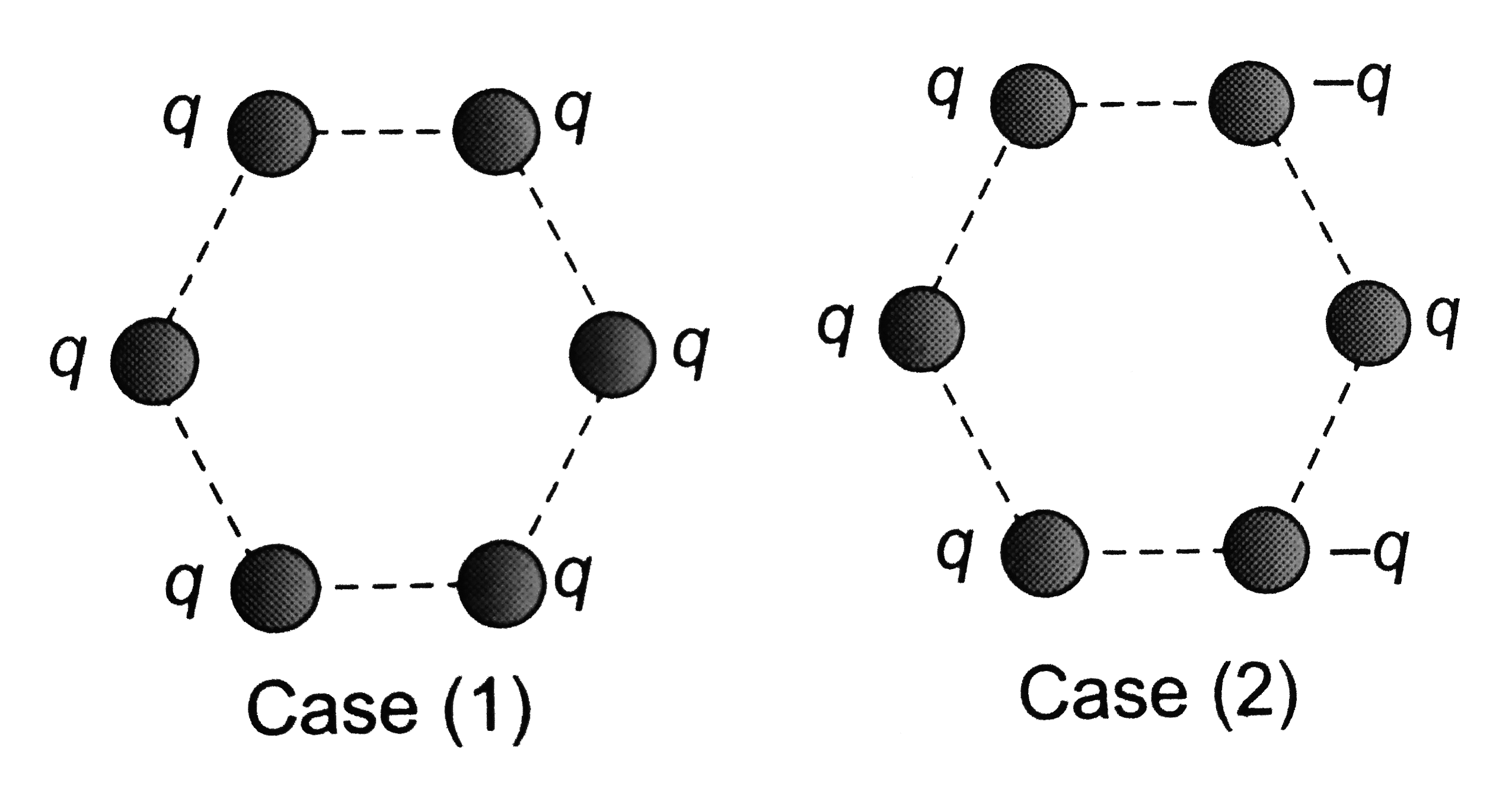
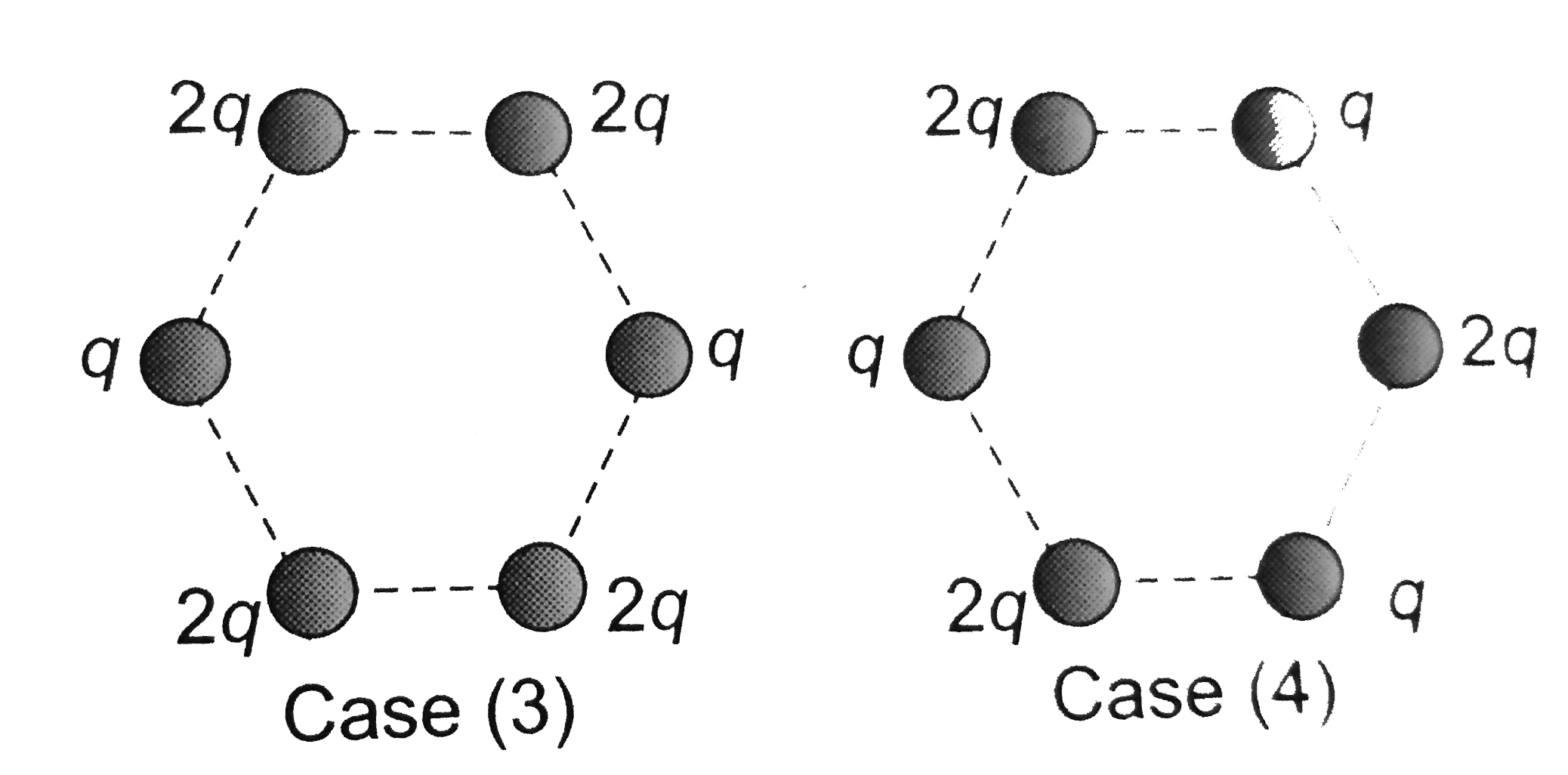 A1B2C3D4
A1B2C3D4 - Question 2 - Select One
In which of the following cases the net force is zero?
AA drop of rain falling down with terminal velocityBA cork of mass 10 g floating on waterCA car moving with constant speed of 30 km/hr on a rough roadDA charged particle moving parallel to the magnetic field - Question 3 - Select One
In which of the following cases the net force is zero .
AA drop of rain falling down with terminal velocityBA cork of mass 10 g floating on waterCA car moving with constant speed of 30 km/hr on a rough roadDA charged particle moving parallel to the magnetic field
In which of the following cases the net force is NOT zero?
View SolutionWhich of the following represent electric field lines?
View SolutionWhich of the following is deflected by electric field ?
View SolutionWhich of the following is not a unit of electric field?
View SolutionCurrent flows through uniform square frames as shown. In which case is the magnetic field at the centre of the frame not zero ?
View Solution


